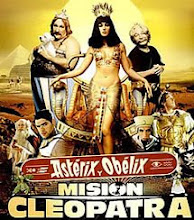 Formato: TVrip
Formato: TVripAno: 2001
BBC Learning / The Open University
Synopsis: The Lapedo Valley is located in central Portugal, about 87 miles (140 kilometers) north of Lisbon, near the city of Leiria. In November 1998, archaeologists came here to check reports ? which proved true ? that prehistoric rock paintings had been found; in the course of their investigations they also discovered a limestone rock shelter, the Lagar Velho site. The upper two or three meters of its fill had been bulldozed away in 1992 by the land owner, which left a hanging remnant of sediment in a fissure along the back wall, but this contained such a density of Upper Paleolithic stone tools, bones and charcoal that it was clear that Lagar Velho had been an important occupation site.Subsequent excavations confirmed this, producing radiocarbon dates of 23,170 to 20,220 years ago. More intriguing, however, was the discovery of human bones and red ocher at the eastern end of the shelter, at ground level; this turned out to be a child's grave, the only Paleolithic burial ever found in the Iberian Peninsula. The bulldozer had crushed the skull but,by a miracle, had missed the rest of the body by 1 inch.A rescue excavation was carried out at Christmas, initially in conditions of great secrecy to avoid any dangers to the unique find from media exposure. The work was difficult because tiny plant roots had penetrated the spongy bones. Sieving of the disturbed sediments led to the recoveryof 160 cranial fragments, which constitute about 80 percent of the total skull.The postcranial skeleton was intact. It belonged to a child of three-and-a-half to five years old (on the basis of the development of the dentition) who was carefully and deliberately buried in an extended position in a shallow pit so that the head and feet were higher than the hips (this is how the skull was hit by the bulldozer). The hands were closeto the hips. The body had been placed on a burned Scots pine branch,probably in a hide covered in red ocher. The ocher was particularly thick around the head and stained the upper and lower surfaces of the bones.The body was accompanied by a complete rabbit carcass between its legs and some remains of red deer, notably pelvis bones, by its head and feet. There were also six ornaments, also stained with red ocher: four perforated canines from four different red deer (two male and two female)and two periwinkle shells from the Atlantic (Littorina obtusata).The deerteeth were associated with the child's skull fragments, so were probably part of a headdress. One perforated shell was complete and found in situ over the child's left shoulder, near the cervical vertebrae, so is thought tobe a pendant.The worn traces of suspension on all these ornaments prove that they were not just funerary attire but had been much used. Unfortunately, the burial had no other archaeological context - although identical perforated teeth and shells were found in Lagar Velho's occupation layers - its age to be confirmed by radiocarbon dating.Analysis of charcoal fragments from the grave, as well as rabbit and other herbivore bones, produced results between 25,000 and 24,000 years ago.Unfortunately, the lack of collagen in the child's bones means that we can learn nothing of its bone chemistry or DNA.
A Morphological Hybrid:
But while this child's burial was of great importance in itself,another feature proved of crucial significance. When the boneswere unearthed, it was noticed that the proportions of its robust lower limbs were not those of modern humans but rather resembled those of a Neanderthal. Yet the two human forms are not thought to have coexisted later than 28,000 years ago in Iberia.How could the child have features of both forms?For example, Neanderthals had poorly developed chins and a jaw that sloped backward, where as modern humans have a pronounced chin; the child has a chin, but that whole region of the jaw slopes back, an archaic feature. The overall shape of its skull is modern, as is the shape of its inner ear (as revealed by CAT scans) - also the teeth, which are fairly small, especially the front ones. However, even though the head, painstakingly reconstructed from the scattered, crushed and deformed fragments, looks modern, one detail was detected - a pitting in the occipital region (known as semispinalis capitis fossae) -that is a diagnostic and genetic trait of Neanderthals alone.The obvious deduction - that this child is a morphological mosaic, a hybrid of Neanderthals and modern humans - has led to a bitter debate among specialists. Those who cannot accept such a concept have dismissed the skeleton as "a chunky modern child," yet this term itself highlights the dilemma, because early modern human skeletons are not chunky at all; they have longlimbs. It is Neanderthals who were chunky.It has also been suggested that the child's proportions reflect a cold adaptation in a modern human population - an apparent advantage in conserving body heat; this part of the world was very cold for a few millennia before the child's time, with icebergs off the coast of Portugal. However, adult skeletons from the same period, which are known from Wales, Moravia and even northern Russia, all display the tropical body proportions of Africans, with no cold adaptations.The unavoidable conclusion, therefore, on present evidence, is that the Lapedo child represents a hybrid of Neanderthals and anatomically modern humans. It is a modern child with genetically inherited Neanderthal traits - which means that the last Neanderthals of Iberia (and doubtless other parts of Europe) contributed to the gene pool of subsequent populations.
Nota: Documentário baseado nos depoimentos de João Zilhão, Cidália Duarte, Erik Trinkaus, Paul Pettitt, Ian Tattersall, Chris Stringer, Simon Hillson, Fred Spoor, Michael Richards, Jakov Radovcic, Fred Smith, Milford Wolpoff, Christoph Zollikofer e Marcia Ponce de León sobre o menino de Lapedo.

Sem comentários:
Enviar um comentário